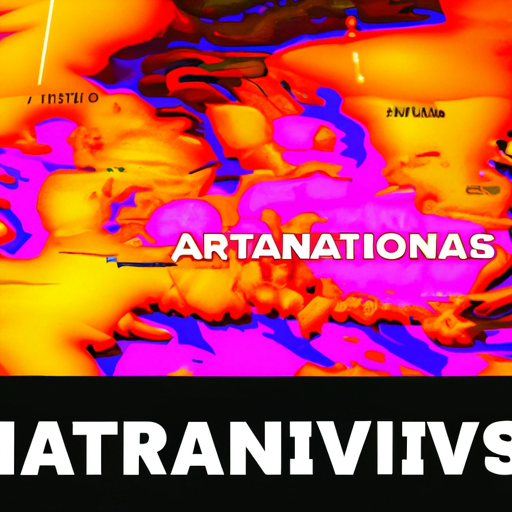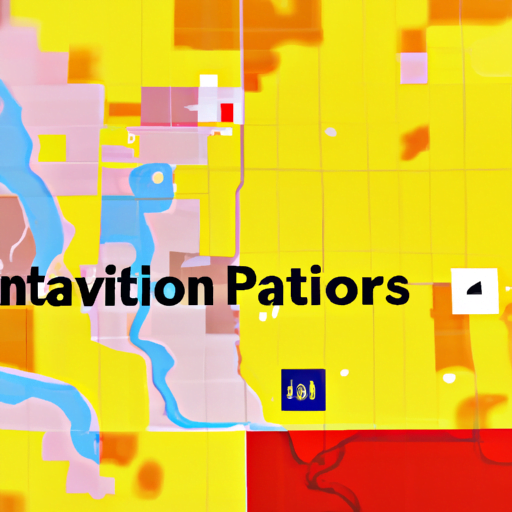
-
Table of Contents
- Interactive Maps: Redefining Navigation and Information Visualization
- What are Interactive Maps?
- The Benefits of Interactive Maps
- Interactive Maps in Various Industries
- 1. Transportation and Logistics
- 2. Urban Planning and Development
- 3. Tourism and Travel
- 4. Environmental Management
- 5. Real Estate and Property Management
- Case Studies: Interactive Maps in Action
- Case Study 1: Google Maps
- Case Study 2: Zillow
- Conclusion
Interactive Maps: Redefining Navigation and Information Visualization

Maps have been an essential tool for navigation and information visualization for centuries. From ancient hand-drawn maps to modern digital representations, maps have evolved significantly over time. One of the most significant advancements in map technology is the development of interactive maps. These maps have revolutionized the way we navigate and understand spatial information. In this article, we will explore the concept of interactive maps, their benefits, and their impact on various industries.
What are Interactive Maps?
Interactive maps are digital maps that allow users to interact with the displayed information. Unlike traditional static maps, interactive maps enable users to zoom in and out, pan across different areas, and access additional information by clicking on specific points of interest. These maps are typically web-based and can be accessed through various devices, including computers, smartphones, and tablets.
Interactive maps utilize a combination of technologies, including Geographic Information Systems (GIS), web mapping services, and user-friendly interfaces. They integrate various data layers, such as satellite imagery, street maps, and thematic overlays, to provide users with a comprehensive and customizable view of the world.
The Benefits of Interactive Maps
Interactive maps offer numerous benefits over traditional static maps. Here are some of the key advantages:
- Enhanced Navigation: Interactive maps provide users with real-time navigation capabilities. Users can input their current location and desired destination, and the map will generate the most efficient route. This feature is particularly useful for drivers, hikers, and cyclists.
- Customization: Interactive maps allow users to customize the displayed information according to their needs. Users can choose which layers to display, adjust the level of detail, and apply filters to focus on specific attributes. This flexibility enables users to extract relevant information quickly.
- Real-Time Data: Interactive maps can integrate real-time data feeds, such as traffic information, weather updates, and public transportation schedules. This real-time information enhances decision-making and helps users plan their activities more effectively.
- Data Visualization: Interactive maps enable the visualization of complex data sets in a user-friendly manner. By overlaying data on the map, users can identify patterns, trends, and relationships that may not be apparent in traditional tabular formats. This visualization capability is particularly valuable for businesses, researchers, and policymakers.
- Collaboration and Sharing: Interactive maps facilitate collaboration and sharing of spatial information. Users can annotate maps, add comments, and share their customized maps with others. This feature is beneficial for teams working on projects that involve spatial data.
Interactive Maps in Various Industries
The impact of interactive maps extends across various industries. Let’s explore how interactive maps are transforming navigation and information visualization in some key sectors:
1. Transportation and Logistics
Interactive maps have revolutionized transportation and logistics operations. Companies can optimize their delivery routes, track vehicles in real-time, and monitor traffic conditions using interactive maps. For example, the ride-sharing platform Uber utilizes interactive maps to match drivers with passengers efficiently and provide real-time updates on estimated arrival times.
2. Urban Planning and Development
Urban planners and developers rely on interactive maps to visualize and analyze spatial data related to land use, infrastructure, and population distribution. These maps help identify suitable locations for new developments, assess the impact of proposed projects, and engage stakeholders in the planning process. For instance, the city of Barcelona used interactive maps to involve citizens in the redesign of public spaces.
3. Tourism and Travel
Interactive maps have transformed the way tourists and travelers navigate and explore new destinations. Travel websites and mobile applications utilize interactive maps to provide users with detailed information about attractions, accommodations, and transportation options. These maps enable users to plan their itineraries, discover hidden gems, and navigate unfamiliar cities with ease.
4. Environmental Management
Interactive maps play a crucial role in environmental management and conservation efforts. They help visualize and analyze spatial data related to ecosystems, biodiversity, and natural resources. Environmental organizations can use these maps to identify areas of high conservation value, monitor habitat changes, and plan restoration projects. For example, the World Wildlife Fund (WWF) uses interactive maps to track the movements of endangered species.
5. Real Estate and Property Management
Interactive maps have transformed the real estate industry by providing users with detailed information about properties and their surroundings. Real estate websites and applications utilize interactive maps to display property listings, nearby amenities, and neighborhood demographics. These maps enable users to make informed decisions about buying or renting properties.
Case Studies: Interactive Maps in Action
Let’s take a closer look at two case studies that highlight the power of interactive maps:
Case Study 1: Google Maps
Google Maps is one of the most widely used interactive mapping platforms. It offers a range of features, including turn-by-turn navigation, street view, and real-time traffic updates. Google Maps has transformed the way people navigate and explore the world. It has become an indispensable tool for both personal and business use.
For example, businesses can leverage Google Maps to attract customers by optimizing their online presence. By adding their business information to Google Maps, companies can increase their visibility and reach a wider audience. Additionally, Google Maps provides businesses with valuable insights, such as popular times and peak hours, to help them make data-driven decisions.
Case Study 2: Zillow
Zillow, a popular real estate marketplace, utilizes interactive maps to provide users with comprehensive property information. Users can search for properties, view their locations on the map, and access detailed data, such as property values, school districts, and nearby amenities. Zillow’s interactive maps enable users to explore neighborhoods and make informed decisions about buying or renting properties.
Conclusion
Interactive maps have redefined navigation and information visualization. They offer enhanced navigation capabilities, customization options, real-time data integration, and powerful data visualization tools. Interactive maps have transformed various industries, including transportation and logistics, urban planning and development, tourism and travel, environmental management, and real estate. Case studies, such as Google Maps and Zillow, demonstrate the practical applications and benefits of interactive maps.
As technology continues to advance, interactive maps will likely become even more sophisticated and integrated into our daily lives. Whether it’s finding the fastest route to a destination, exploring a new city, or making informed business decisions, interactive maps have become an indispensable tool for navigating the world and visualizing spatial information.
